4298
IoT Warehouse Management: Moving towards Smarter Technology
08 Oct, 2020
14 min read
4298
08 Oct, 2020
14 min read
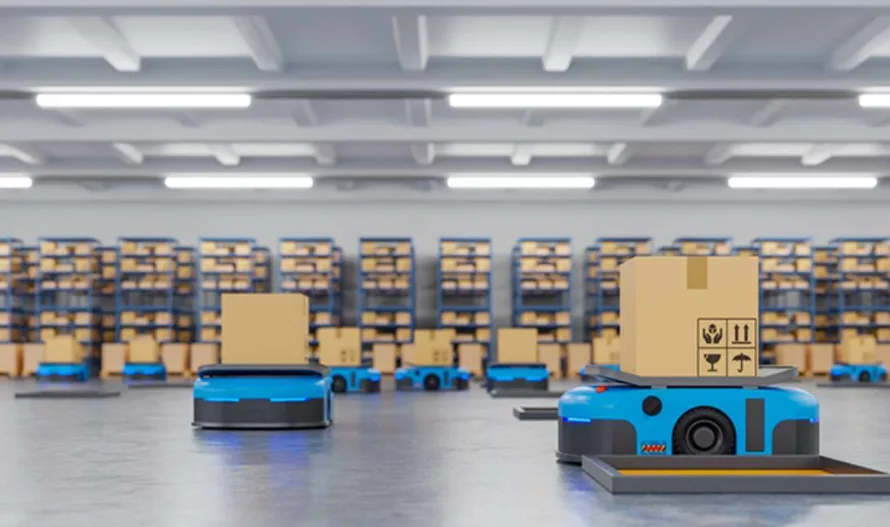
Remember the ‘Amazon Go’ store? From the moment you enter, till you leave the store, there’s no human interaction.
All thanks to IoT!
Let’s consider Amazon again. As we know, Amazon is the largest eCommerce marketplace and delivers an average of 36 million orders per day. So many-a-times, they store the orders in the warehouses. That in a day is beyond human capabilities in a place that fits 10 football courts.
To simplify these tasks, Amazon has an IoT based warehouse management system. It uses sensors and robots to automate tasks such as stocking, packaging, real-time inventory tracking, predictive analytics, and more.
With IoT, whether it’s 36 million or even double, you can easily manage them all in a day. It can drive all the challenges of the industry utilizing it.
This post is all about how you can leverage IoT warehouse management. So, let’s get started!
Here’s what the post covers:
As a warehouse manager, you always think – how can I improve warehouse efficiency?
First, you address the challenges you’re facing in warehouse management. Here are some:
Imagine this.
The inventory is on another shelf than the usual one. You can’t find it at the time of delivery. The shipment you need to deliver is not on time. You are unaware of your shipment location and the only means is to get on a call with the driver, who keeps saying, “I will be there soon!”
And what if the inventory gets lost or stolen, like the cargo shipments that face more than $30 billion loss every year?!
Are you able to manage and forecast the product demand?
You have an inventory management software where you enter the inventory details. But you can’t know the exact count of inventory in real-time. This is because it is not possible to keep adding the details every second an inventory comes in the warehouse or leaves.
Besides, you don’t even know which products are in demand, except those monthly reports that inform you about the products that were demanded this month.
So, you have a huge inventory but unoptimized storage systems and palette patterns. The quantity of the space necessary to store keeps increasing along with the time required by order pickers to search for an inventory in the warehouse. Delays and more delays!
Equipment like forklift breaks down increasing the downtime. There’s a delay in operations. Moreover, the products stored are in improper condition. For example, perishable food items that you need to store at a specific temperature but unfortunately, an improper condition damages the product and it happens more frequently.
You can overcome such challenges by IoT solutions for warehouse management that automates the entire warehouse operations.
Learn how you can overcome these challenges with the power of IoT.
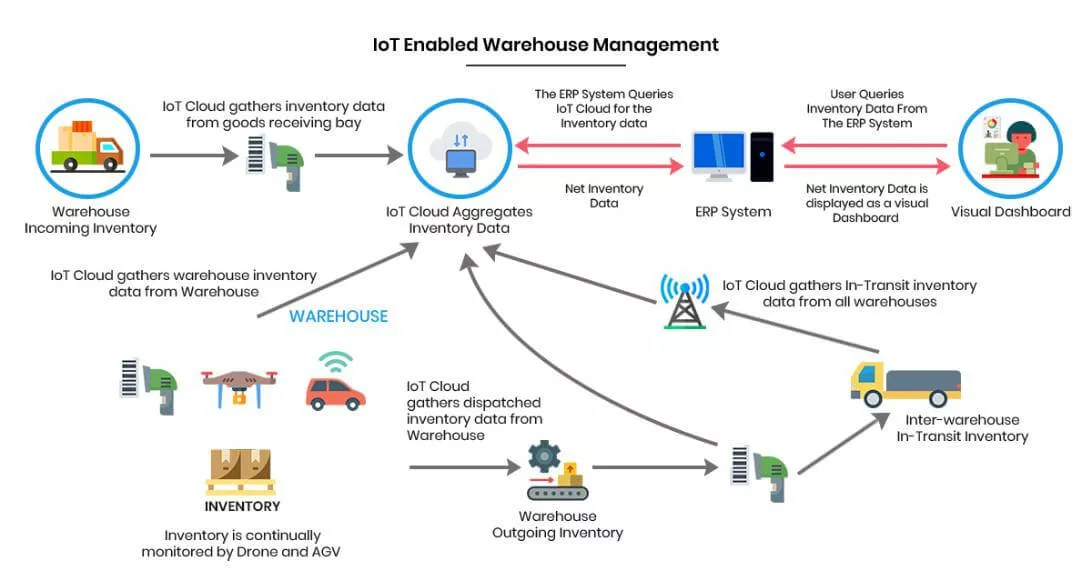
Managers aim to deal with the warehouse challenges, and improve efficiency. For this, they involve IoE (Internet-of-everything). It uses sensors and robots that take numerous measurements, and collects data from different data points. The analytical tools help provide effective, productive, and efficient ways of running the business. Here are some of the roles of IoT solutions for warehouse management:
IoT based warehouse management system helps businesses with real-time product location, transportation details, packaging, and shipping. Due to instant updates, you can ensure that no asset loses the track. All these apply to human assets too. With IoT warehouse management solutions, you can track the location of the staff in real-time and thus manage the deliverables responsibly.
Smart warehouse devices such as sensors on shelves and assets help you locate and manage your inventory. In case of emergency, it allows you to take preventive measures. For instance, if an asset is out-of-stock, you will get a notification and you can take actions accordingly. IoT warehouse management devices also make it easier for you to deliver or return a shipment as you have exact details of the asset – location, condition, and more.
With IoT warehouse management you can ensure that failure rates are low. By pre-determining the condition of the asset, equipment, a predictive maintenance system helps warehouse managers avoid failures and reduce downtime. By detecting the asset condition, collecting data from various sources such as vehicles, shipping conveyances, assets, you can reduce counterfeiting, theft, spoilage, or any other kind of accidents.
With detailed data analytics, IoT based warehouse management systems can help you make profit-oriented future business plans. It tracks every action, processes all data even if it’s about a specific product demanded more at a specific location. You can predict what is in demand and what’s not working and eventually plan your inventory. This way IoT warehouse management will help you optimize your warehouse space and minimize the time required for locating and picking.
In the warehouse, IoT is also known as IoE (internet-of-things) because it automates every single task, especially those tedious ones – stocking, picking, packaging, loading, and unloading, etc. Moreover, solutions for IoT warehouse management also automate the entire work process like auto-ordering when the product is out-of-stock, notifying the maintenance engineer about a scheduled equipment maintenance check, and it’s a never-ending list.
One way that automation has been useful is by taking natural language processing and applying it to workflow automation.
Looking for IoT solutions for your warehouse?
Wondering how you can utilize the power of IoT in your warehouses?
It’s simple! Think of the use cases and the technologies that drive smart warehouses automation.
From the asset’s arrival to the warehouse and its delivery to the customer, the IoT warehouse management system collects every bit of data such as status update, location, notifications, and all the other relevant information.
Using connected devices, warehouse staff can identify products and packages instantly. Wearables such as smartwatches will track staff’s product picking accuracy to track their performance. Besides, the heartbeat and vitals monitoring feature will help ensure that the staff is not exhausted.
IoT, along with warehouse robotics helps automate monotonous tasks like picking, packing, stocking, managing, etc. and reduces the chances of human error – order inaccuracy, inventory damage.
Smart glasses* help in picking items and transporting them around the warehouse. The GPS tracker in the glasses helps in auto locating the shelf and the products. The staff doesn’t need to memorize the warehouse blueprint or go on a manual hunt to pick the products. Moreover, it can automatically manage the inventory without any documentation. It can also run quick scans of the barcode stickers on it for inventory purposes.
*The glasses work like the ones in virtual reality games where GPS location helps us in navigation, and show details about the presence of elements in the game.
AI can analyze and process the collected data into valuable insights. For example, IoT can collect the forklift’s data and inform the warehouse manager in case of failure. These valuable insights can further help in taking informed future decisions.
As GPS doesn’t work well indoors, many companies use different technologies such as RFID tags, beacons based on Bluetooth Low Energy, infrared, or ultrasonic positioning, etc. Here are the most common and widely used technologies that make processing smart.
As RFID tags can store more data than barcodes, companies use it to store and collect asset information – size, manufacturer, expiration date, serial number, production line, and so on. Using an RFID reader that can scan 200 tags at once, you can easily retrieve the data.
Beacons are nothing but the transmitters that you can install on a tracked object. They then broadcast a radio signal to transmit the data to the IoT platform. You can even add additional sensors like accelerometer or temperature to Beacons/BLE bracelets for tracking sensitive objects.
Blockchain technology provides real-time insights about the product. It also helps managers detect theft and manage inventory proactively.
It can be a difficult task to find your way through the technological maze. Our team can help you use technologies that make your warehouse smart.
By now we’ve learned about IoT and how it drives warehouse operations, however, if you’re still skeptical about embracing this technology, here’s how IoT warehouse management can prove beneficial.
IoT warehouse management gives real-time asset details such as location, transportation, condition, packaging, and routing. The instant updates and continuous tracking ensure that no inventory is damaged. It also helps in managing inventory.
IoT devices collect real-time data of the assets that you can further share with customers to provide transparency.
Smart shelves, containers, pallets will help in locating and managing the warehouse inventory. If a product is out-of-stock or conditions are affecting the quality of goods, managers will receive alerts and notifications. It also helps in planning the inventory based on product demand.
IoT Warehouse Management systems help businesses reduce risks, downtime, and avoid accidents by monitoring conditions and using predictive maintenance to detect early signs of equipment malfunctions.
As everything is planned and optimized, smart warehouses have less to no chance of wasting resources, thereby, increasing profits and reducing management costs.
By optimizing the warehouse, you can utilize the storage space and scale it according to your needs.
IoT based warehouse management systems can collect and process inventory data into valuable insights that can help in forecasting workload increase or decrease, product demand, inventory management, adjusting storage space, etc.
IoT based warehouse management system provides instant, on-demand assistance to the staff that helps them complete a higher number of tasks per day. Wearables help them in navigating the warehouse, identifying the right packages, and prioritizing tasks.
Along with IoT, there are many prominent technologies used for smart warehousing. Let’s have a look at the most trending ones.

AMR is an IoT technology used to move or handle products within the warehouse. Automated Guided Vehicles (AGVs) operate on a fixed path. On the other hand, robots can freely move in the warehouse using the navigation sensors and cameras. The sensors help them execute a planned movement based on the environment, position, and other factors in the path. The use of AMRs in smart warehouses is critical. They’re replacing forklifts, pulling 1000 kg payloads around a factory. In addition, the sensors on AMRs track data and provide managers with feedback about the products and the AMR.
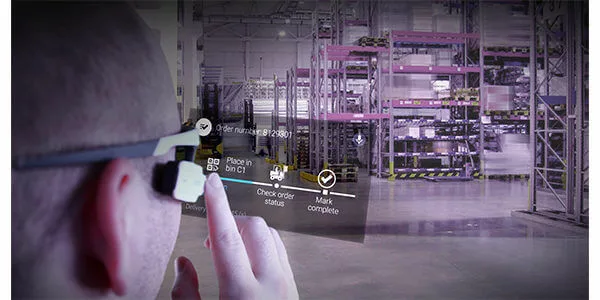
Source: DC Velocity
Smart glasses help warehouse managers and staff to view visual displays of order picking instructions, or information about the asset – location. Using it, managers can also decide where to place a certain product. (It’s an AR technology which presents every detail right in front of you.) Overall, it enhances picking performance and accuracy, reduces onboarding and training time.
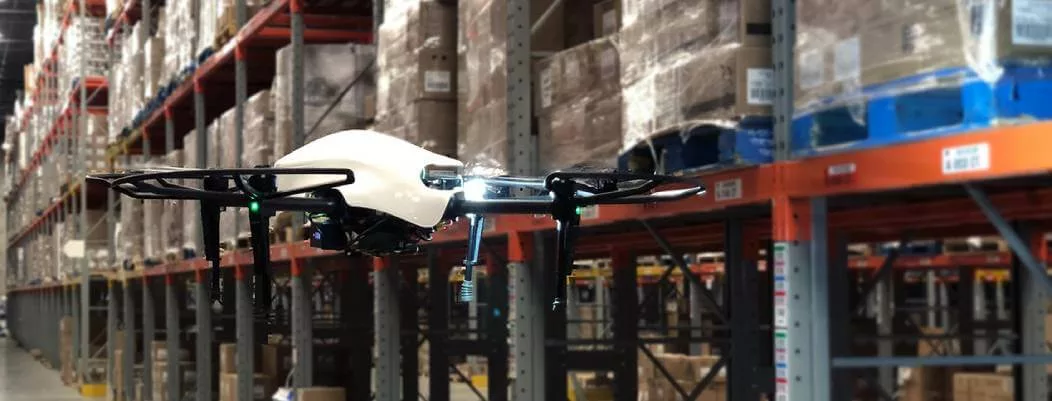
Source: Supply Chain Institute
Moving and picking the item manually in the warehouse is challenging and highly unproductive. Besides, picking products from high shelves increases the risk of workplace injuries. Drones, on the other hand, can help in warehouse management by picking products from high shelves, tracking, and guiding in location.
In the rapidly evolving landscape of smart warehousing, staying at the forefront of technology is crucial. This is where warehouse consulting services can be invaluable. They can offer expert guidance to streamline the integration of IoT and other advanced technologies, ensuring a smooth transition to a more efficient and cost-effective warehouse, and ultimately boosting productivity.
Also Read: Benefits of Drone Delivery
Companies are implementing IoT solutions in warehouses to accomplish improvements – from reduced forklift damage to increased productivity. Here are the top players in IoT warehouse management:
Amazon has a semi-automated warehouse where 200,000 robots work alongside human staff. The robots perform the basic tasks of moving packages or scanning barcodes. However, “the end-to-end automated warehouse is at least 10 years away”, says Scott Anderson, the company’s director of Robotics fulfillment.
DHL has a complete set of innovations at its warehouse. The company employs smart glasses, robots, drones, autonomous vehicles to automate warehouse operations. DHL has been working with Cisco to bring IoT to its three major warehouse operations in Europe. Recently it is testing the technology at three pilot sites in Germany, Netherlands, and Poland.
Alibaba, in 2018, launched a fully robotic warehouse. It had over 100 AGVs and 700 guided robots to transport parcels across the warehouse and deliver goods. Each mobile robot is equipped with sensors to avoid a collision. Since the smart warehouse began operations, the company claims the efficiency among workers has increased three-fold. On the business side, it helped save time, money, and failures.
Ocado is an online-only grocery store that uses bots to automate basic tasks like moving goods and lifting them. It has a system that can manage inventory processes over 60,000 orders per week and is active 24/7.
Lids, a fashion apparel company, started using an IoE based robotic system to simplify the warehouse operations. Previously, order takers would take the list of products and search for it in the warehouse manually. Now, cart-like robots get a list and then retrieve the products, place them in bins, and deliver it to workers. Sensors equipped on robots track the robots’ location and transmits the data to the remote monitoring team.
“Anything that’s moving in the warehouse, the system knows where it is”, says Bill Leber, director of Business Development at Swisslog.
Productivity! IoT solutions for warehouse management make operations smooth by increasing the product picking, finding, and packaging speed. Automation reduces failure and downtime, thereby, enhancing productivity and warehouse security.
IoT is that one-person army that you wish to have for your warehouse. We can be that one tech scientist to help you build your army.
Tell us about the IoT Warehouse Management system that you wish to build and we help you.
All product and company names are trademarks™, registered® or copyright© trademarks of their respective holders. Use of them does not imply any affiliation with or endorsement by them.
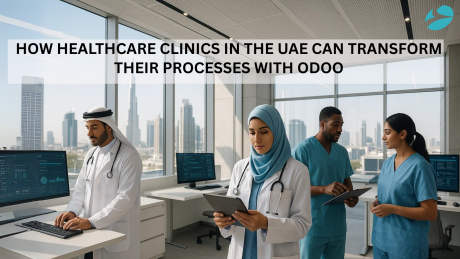
68
By Biztech
09 Oct, 2025

74
By Biztech
09 Oct, 2025

91
By Biztech
06 Oct, 2025